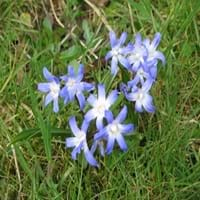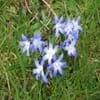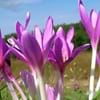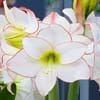Life Span
Perennial
Biennial and Perennial
Type
Bulb or Corm or Tuber
Vegetable
Origin
Mediterranean, Turkey
Europe, Western Asia
Types
Not Available
Not Available
Habitat
meadows, Terrestrial
waste ground, wastelands
USDA Hardiness Zone
3-9
4-9
Sunset Zone
21,22
A1, A2, A3, H1, H2, 1a, 1b, 2a, 2b, 3a, 3b, 4, 5, 6, 7, 8, 9, 10, 11, 12, 13, 14, 15, 16, 17, 18, 19, 20, 21, 22, 23, 24
Habit
Clump-Forming
Rosette/Stemless
Flower Color
White, Blue, Pink, Violet
Yellow
Flower Color Modifier
Bicolor
Bicolor
Fruit Color
Not Available
Brown, Black
Leaf Color in Spring
Green
Green
Leaf Color in Summer
Light Green
Green
Leaf Color in Fall
Several shades of Green
Green
Leaf Color in Winter
Light Green
Not Available
Leaf Shape
Long Linear
Pinnate
Plant Season
Spring, Winter
Summer
Sunlight
Full Sun, Partial Sun
Full Sun
Growth Rate
Medium
Medium
The pH of Soil
Acidic, Neutral, Alkaline
Neutral
Soil Drainage
Well drained
Well drained
Bloom Time
Early Spring, Late Winter
Summer
Tolerances
Drought
Drought
Where to Plant?
Container, Ground, Pot
Ground, Pot
How to Plant?
From bulbs, Seedlings
Seedlings
Plant Maintenance
Medium
Medium
Watering Requirements
Average Water Needs, Do Not over Water, Do not water frequently, Keep the ground moist but not water-logged, Never Over-water
Average Water Needs, Do Not over Water, Keep the ground moist but not water-logged
In Summer
Lots of watering
Lots of watering
In Spring
Moderate
Moderate
In Winter
Average Water
Average Water
Soil pH
Acidic, Neutral, Alkaline
Neutral
Soil Drainage Capacity
Well drained
Well drained
Sun Exposure
Full Sun, Partial Sun
Full Sun
Pruning
Remove damaged leaves, Remove dead branches, Remove dead leaves
Remove damaged leaves, Remove dead branches, Remove dead leaves
Fertilizers
All-Purpose Liquid Fertilizer
All-Purpose Liquid Fertilizer
Pests and Diseases
Red blotch
Aphids, Armyworm, Cutworms, Downy mildew, Pitch canker, Red blotch
Plant Tolerance
Drought
Drought
Flower Petal Number
Single
Not Available
Fragrant Bark/Stem
No
Yes
Foliage Texture
Fine
Fine
Foliage Sheen
Matte
Matte
Attracts
Bees, Flying insects
Butterflies
Allergy
Skin rash
Stomach burn
Aesthetic Uses
Beautification, Bouquets, Ground Cover, Showy Purposes
Not Used For Aesthetic Purpose
Beauty Benefits
Not Available
Blood purifying, Good for skin
Environmental Uses
Air purification
Air purification
Medicinal Uses
No Medicinal Use
Aphrodisiac
Part of Plant Used
Flowers
Root
Other Uses
Decoration Purposes, Showy Purposes, Used as Ornamental plant
Food for animals, Used as a nutritious food item
Used As Indoor Plant
Yes
Yes
Used As Outdoor Plant
Yes
Yes
Garden Design
Alpine, Container, Foundation, Lawns and Turf, Mixed Border, Rock Garden / Wall, Wildflower
Edible, Herb, Vegetable
Botanical Name
CHIONODOXA
PASTINACA sativa
Common Name
Chionodoxa, Glory-of-the-Snow
Parsnip
In Hindi
Chionodoxa
चुकंदर
In German
Chionodoxa
Pastinake
In French
Chionodoxa
Panais
In Spanish
Chionodoxa
Chirivía
In Greek
Chionodoxa
Είδος δαυκίου
In Portuguese
Chionodoxa
cherivia
In Polish
Chionodoxa
Pasternak
In Latin
Chionodoxa
parsnip
Phylum
Platyhelminthes
Magnoliophyta
Class
Cestoda
Magnoliopsida
Family
Liliaceae
Apiaceae
Clade
Angiosperms, Monocots
Angiosperms, Asterids, Eudicots
Tribe
Not Available
Not Available
Subfamily
Not Available
Not Available
Number of Species
Not Available
Season and Care of Chionodoxa and Parsnip
Season and care of Chionodoxa and Parsnip is important to know. While considering everything about Chionodoxa and Parsnip Care, growing season is an essential factor. Chionodoxa season is Spring and Winter and Parsnip season is Spring and Winter. The type of soil for Chionodoxa is Loam and for Parsnip is Loam while the PH of soil for Chionodoxa is Acidic, Neutral, Alkaline and for Parsnip is Neutral.
Chionodoxa and Parsnip Physical Information
Chionodoxa and Parsnip physical information is very important for comparison. Chionodoxa height is 10.20 cm and width 5.10 cm whereas Parsnip height is 15.20 cm and width 7.60 cm. The color specification of Chionodoxa and Parsnip are as follows:
Chionodoxa flower color: White, Blue, Pink and Violet
Chionodoxa leaf color: Green
Parsnip flower color: Yellow
- Parsnip leaf color: Green
Care of Chionodoxa and Parsnip
Care of Chionodoxa and Parsnip include pruning, fertilizers, watering etc. Chionodoxa pruning is done Remove damaged leaves, Remove dead branches and Remove dead leaves and Parsnip pruning is done Remove damaged leaves, Remove dead branches and Remove dead leaves. In summer Chionodoxa needs Lots of watering and in winter, it needs Average Water. Whereas, in summer Parsnip needs Lots of watering and in winter, it needs Average Water.





